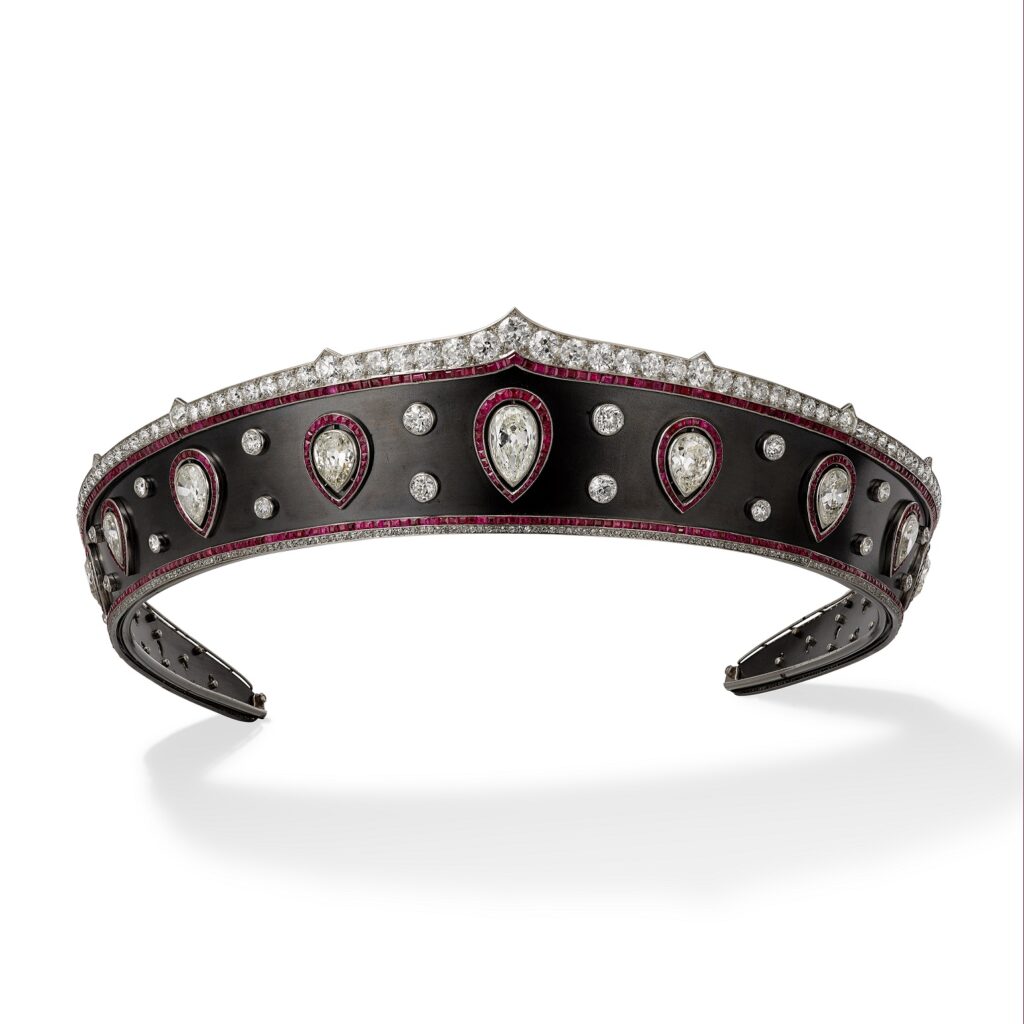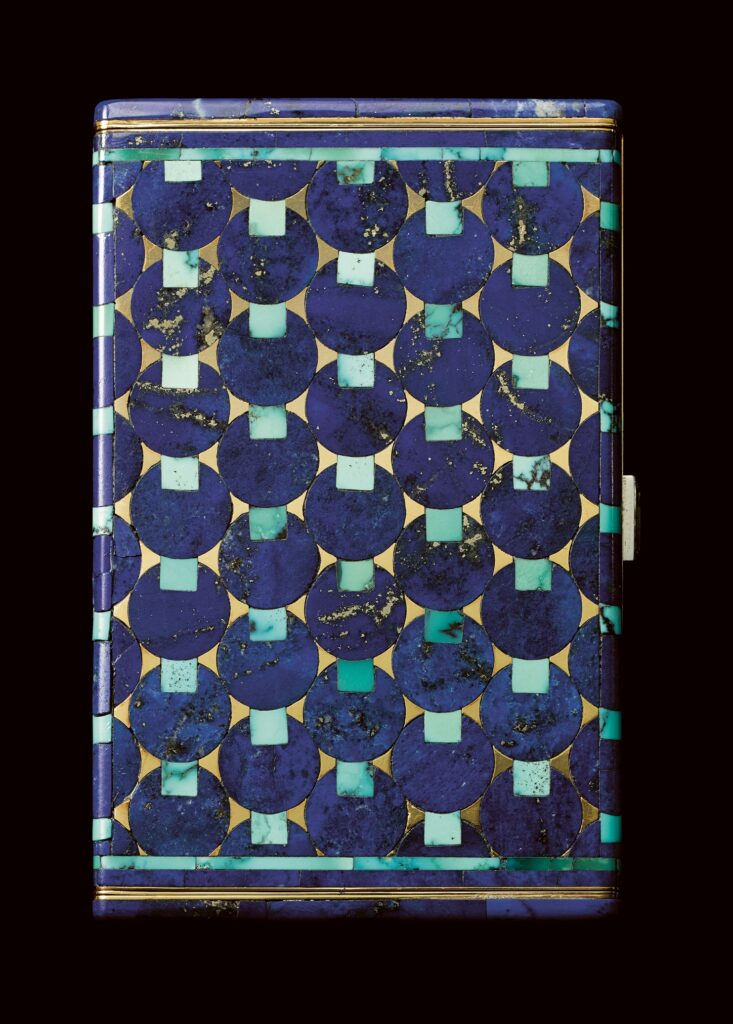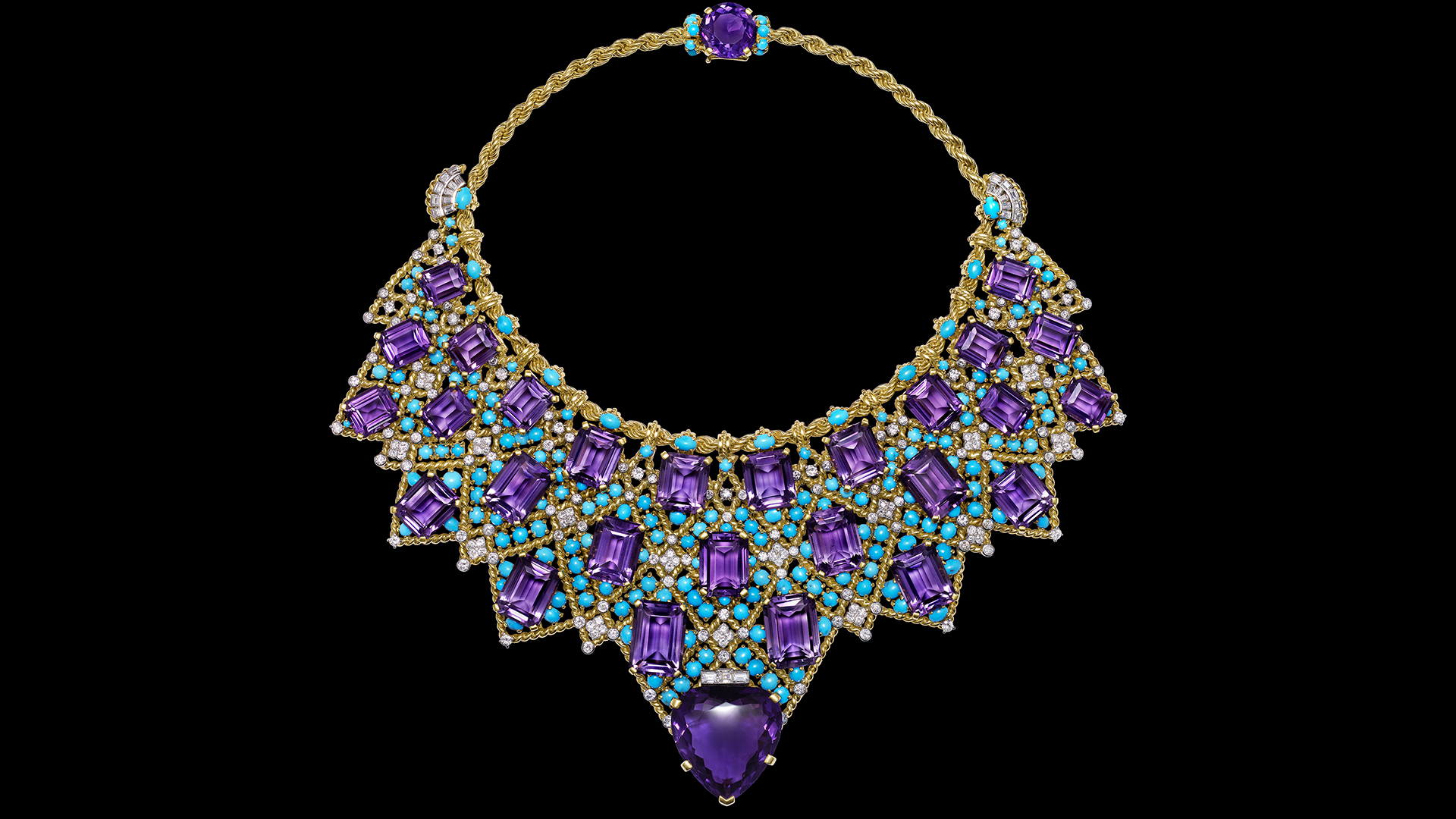One of the most important and influential jewelry design houses of the 20th century, Cartier has fascinated and intrigued jewelry aficionados with its innovative designs and the superb quality of its fabrication.
Now the Dallas Museum of Art (DMA) presents “Cartier and Islamic Art: In Search of Modernity”, through September 18, 2022. The exhibition explores how Cartier’s designers adapted forms and techniques from Islamic art, architecture, and jewelry, as well as materials from India, Iran, and Arab countries, synthesizing them into a recognizable, modern stylistic language unique to Cartier.
“Cartier and Islamic Art”, is co-organized by the DMA and the Musée des Arts Décoratifs, Paris, in collaboration with the Musée du Louvre and with the support of Maison Cartier. The exhibition brings together over 400 objects from the holdings of Cartier, the Musée des Arts Décoratifs (Paris), the Musée du Louvre, the Keir Collection of Islamic Art on loan to the Dallas Museum of Art, and other major international collections.
“The design strategies in this exhibition—motif, pattern, color, and form—reveal the inspirations, innovations, and aesthetic wonder present in the creations of the Maison Cartier. Focused through the lens of Islamic art, the designs reveal how the Maison migrates and manifests these styles over time, as well as how they are shaped by individual creativity,” said Sarah Schleuning, The Margot B. Perot Senior Curator of Decorative Arts and Design at the DMA. Schleuning is co-curator of the show along with Dr. Heather Ecker, the former Marguerite S. Hoffman and Thomas W. Lentz Curator of Islamic and Medieval Art at the DMA; Évelyne Possémé, Chief Curator of Ancient and Modern Jewelry at the Musée des Arts Décoratifs, Paris; and Judith Hénon, Curator and Deputy Director of the Department of Islamic Art at the Musée du Louvre, Paris.
Paris and Islamic Art
“Cartier and Islamic Art” takes a look back at the cultural context of Paris in the late 1800s and early 1900s and explores the Islamic influence on Cartier design during that period. The exhibition also looks at the role of Louis Cartier, who was a collector of Islamic art and how it inspired him. Louis was a partner in the Cartier Paris branch and eventually became director.

During the early 1900s, Paris was a hub for Islamic art. Two major exhibitions of Islamic art were held in Paris, one in 1903 and the other in 1912 at the Musée des Arts Décoratifs. Another exhibition of masterpieces of Islamic art was on display at the Munich Museum in 1910. All three exhibitions were major sources of inspirations for Louis Cartier. During the early 1900s, Cartier was making jewelry in the garland style that was popular during the Edwardian era. However, Cartier wanted to expand the firm’s design vocabulary. The Cartier design team looked to new influences to inspire their designs, including Japanese textiles, Chinese Jade, Indian jewelry and the art and architecture of the Islamic world. Louis Cartier also examined his own personal collection of Persian and Indian paintings, manuscripts and other luxury objects for inspiration. All of these influences resulted in a new style of jewelry, known as ‘styles modern’, which later became known as Art Deco.
Source of Inspiration

The exhibition not only showcases jewelry and other objets, but also takes a look at the source of inspiration for the pieces, allowing visitors to see the jewels in a whole new way. The jewelry is displayed with historic photographs, design drawings, archival materials and works of Islamic art that include items shown in the Paris and Munich exhibitions and from Louis Cartier’s personal collection.
The exhibition is brought to life through digital technologies that provide insight into the creative process at Cartier. It showcases the original source object to its adaptation as a jewelry design and to its fabrication in precious stones, metal and other organic materials.
Sumptuous Cartier jewels, drawings and archival photographs are compared and contrasted to examples of Islamic art that have similar forms and ornaments. The result highlights the inspiration and adaptation along with the recombination of motifs that came from Islamic sources in Cartier’s jewelry designs. Motifs include geometric and naturalistic forms and Chinese designs that were naturalized in the Islamic lands under the Mongol and Timurid rulers in the Middle East and India since the 13th century.
Travels with Jacques

In addition to scholarly influences, real life also inspired Cartier jewelry design. Jacques Cartier, the younger brother of Louis, traveled to India and Bahrain where he discovered new materials to use in Cartier creations including carved emeralds and engraved colored gemstones, which were imported by the Maison. New ideas also came from Jacques’ travels including unusual color combinations and new techniques in jewelry construction, especially the innovative tutti frutti style.
The look back at the creation of Cartier’s visual vocabulary and the influences from Islamic art show how some of the firm’s most iconic styles evolved.
“For over a century, Cartier and its designers have recognized and celebrated the inherent beauty and symbolic values found in Islamic art and architecture, weaving similar elements into their own designs. This bridging of Eastern and Western art forms speaks exactly to the kinds of cross-cultural connections the DMA is committed to highlighting through our programming and scholarship,” concludes Dr. Agustín Arteaga, the DMA’s Eugene McDermott Director. “Not only does this exhibition present our audiences with the opportunity to explore Cartier’s dazzling designs, but it also spotlights the strength of our powerhouse Islamic Art and Decorative Arts and Design departments, as well as those of our colleagues at the Musée des Arts Décoratifs and the Louvre.”
Featured image (top of page): Bib necklace, Cartier Paris, special order, 1947. Twisted 18-karat and 20-karat gold, platinum, brilliant- and baguette-cut diamonds, one heart-shaped faceted amethyst, twenty-seven emerald-cut amethysts, one oval faceted amethyst, turquoise cabochons. Cartier Collection. Nils Herrmann, Cartier Collection ©Cartier
Authored by Amber Michelle
